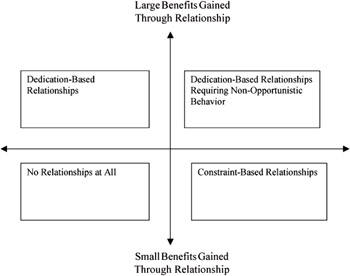Why CRM
|
| < Day Day Up > |
|
Both individuals and businesses are increasingly behaving in the new ways of the information age. They are becoming more sophisticated consumers as a wealth of information and convenience is available to them through the online channels. With all the choices that customers have today, companies cannot survive without better knowledge of their customers to help them offer more customized products and services (Hennig-Thurau & Klee, 1997, p. 13).
All customers are not created equal. Some are profitable, some are unprofitable, some will become highly profitable, and some will never be profitable throughout their entire customer lifecycle. Optimization is the science of "optimally" determining what can be done to make a customer as profitable as possible for as long as possible. Optimization is thought to be too esoteric a science to be applied in situations in which intuition can be as important in making the right decisions as cold hard facts about customer behavior. In fairness to the skeptics, it is harder to apply optimization to customer relationship management than it is to other areas of business. But with advances in database technology, data mining, and the CRM systems themselves, optimization can be applied more often than not. When it is applied, it can be the single most important technique in the CRM system for increasing customer profitability (Anderson, 2000, p. 396).
Why and Why Not Do Customers Build Relationships With Companies
An investigation of the customer's motivations for building relationships with business firms is based on the respective interpretation of the term "relationship." Consequently in the case the following two conditions are met the word relationship applies:
-
The customer repeatedly buys products and/or services from the same firm (behavioral component of the term relationship).
-
The customer's repurchase behavior is based on some rationale thought (intentional component of the term relationship). However, this does not mean that the customer is necessarily aware of the existence of the relationship between him or her and the firm.
With regard to customer motivations for establishing and maintaining relationships, one has to differentiate between two basic characteristics of relational motives. The first category covers those benefits which are closely related to the core product (such as consumer goods marketing) or the core service (in the case of services marketing). The second category includes benefits that refer to the relationship itself and are only peripherally related to the quality of single transactions. The second term from the core service is described as "true relationships" for fulfillment of customers' relational needs and the delivery of superior relational benefits (Wallace, 2000, p. 8). Figure 1 provides a description of the various customer-firm relationships possible.

Figure 1: A typology of relationships between customers and business firms (Jenkins, 1999, p. 372)
Customers are willing to build a relationship with a company when two conditions are met. First, the sum of product or service-related benefits and relational benefits must be positive (i.e., larger than zero) even when the costs and disadvantages of that relationship are taken in to account. Second, the net benefits of the relationship must be superior to other alternatives available from competing firms. In addition, the mutual character of the relationship construct is reflected in the fact that the relationship must also be economically advantageous for the firm as a relational partner (Gremler, Dwayne D., Gwinner, Kevin P. & Thurau, Thorsten Hennig, "Why Customers Build Relationships With Companies-and Why Not") (Jenkins, 1999, pp. 370-372). First, relational benefits can be of importance of in relationships between a single customer and a single employee. This is, for example, the case in exchanges between customers and physicians, dentists, analysts, and hairdressers due to the particularly high levels of intimate contact between customer and employee. These benefits are referred to as personal-level benefits. Second, the relational benefits may result from interactions between an individual customer and the company as a whole. These are referred to as company-level benefits. These types of benefits may be particularly prevalent in larger service companies having a relatively high degree of standardization and less intimate contact with customers (e.g., restaurants, travel agencies). Finally, as the term brand loyalty indicates, some customers have relationships with certain brands.
Benefits and Barriers for Customer Relationships
Given the fact that a customer's decision for entering and maintaining a "dedication-based" relationship with a company is driven by superior benefits delivered by that relationship (for both core product and core service), the question remains as to what kind of benefits are crucial for the customer to remain loyal. The benefits derived from the core product/service are very context-specific. Relational benefits can be subdivided depending on the respective object of relevance (Qallace, 2000, p. 3; White, 2000, pp. 53-72).
Managing relationships with customers, especially with the firm's employees, channel partners, and strategic alliance partners, is critical to the firm's long-term success. In this context CRM based on social exchange and equity significantly assists the firm in developing collaborative, cooperative and profitable long-term relationships (Author, 1999, p. 71).
|
| < Day Day Up > |
|
EAN: 2147483647
Pages: 174